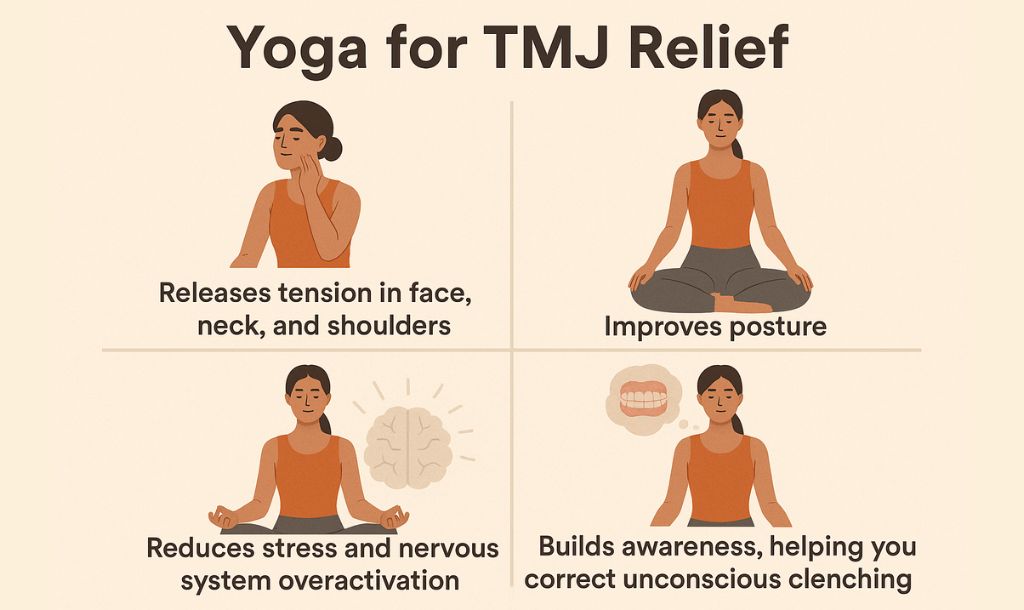What is Dandasana (Staff Pose)?
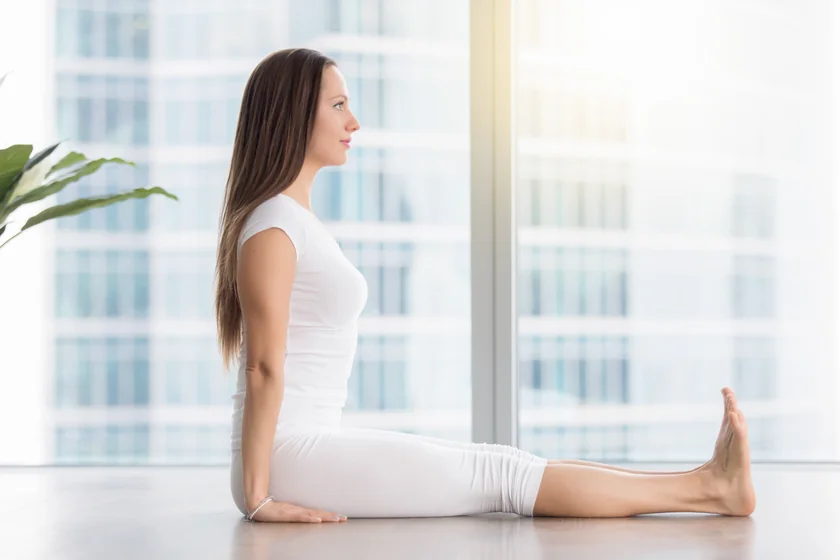
Dandasana, or Staff Pose, is a yoga posture that is a fundamental seated yoga asana and can be practiced by all yogis for improved body posture and enhanced mental awareness.
This posture is known as Staff or Stick pose because the shape of the spinal column is held straight and vertically upright – much like an actual staff or stick. This asana is known as the first pose in the Primary Ashtanga Yoga Series.
In the Staff Pose, the practitioner sits in an upright position with both legs extended in front, with both palms placed on the sides of the glutes.
It may look straightforward to perform, but the right amount of mindful awareness part can be quite tricky to master right away.
Overview & Etymology
The name Dandasana comes from a combination of two Sanskrit words; ‘Danda,’ which means Staff or Stick, and ‘Asana,’ which means Pose or Posture.
Not many ancient Hatha Yoga texts describe the Staff Pose practice in detail as it’s practiced in modern-day yoga.
However, there are mentions of Dandasana in the 19th-century Sritattvanidhi text (which features 122 hatha yoga asanas). But in this context it is a different pose that involves standing straight with the support of a rope.
Sanskrit Name: दण्डासन Pronunciation: dun-DAHS-anna
Pose Type: Seated Pose Also known as: Staff Pose or Stick Pose
Strengthens: Spine, Back, Tailbone, and Shoulders
Stretches: Spine, Tailbone, and Neck
Health Benefits of Dandasana
Improves body posture.
Helps calm the mind.
Relaxes the hamstrings, knees, and ankles.
Tones muscles around the abdomen and hips.
Enhances mental awareness and mindfulness.
Improves digestive and reproductive system function.
Strengthens, lengthens, and tones the back muscles.
Activates the Manipura, Swadisthana, and Muladhara Chakras.
When to Avoid Performing Dandasana
Avoid if you have a hernia.
Avoid if you have spondylitis.
Avoid if you have a slipped disc.
Avoid if you have had a recent surgery.
Avoid if you are suffering from an injury in the hamstrings, core, or spine.
How to do Dandasana (Staff Pose)
With the help of our team of expert yoga teachers and editors, we have divided this detailed guide into four easy parts below.
Part 1: Preparation for Dandasana
Start your Staff Pose routine with leg, spine, and hip activation yoga poses.
The below asanas will increase blood circulation throughout your body, helping you perform the main pose without risk of injury.
1. Tadasana (Mountain Pose) - This pose is the foundation of all standing yoga asanas and builds strong legs. This pose will help you activate your ankles, knees, and core in preparation for Staff Pose.

To get in Mountain Pose, stand straight with both feet close to each other and keep your hands at your sides. Breathe gently and hold the pose for 1 to 5 minutes.
2. Uttanasana (Standing Forward Bend) - This forward bending motion is an excellent way to activate your lower back and engage your core muscles. Uttanasana is an excellent way to warm up dormant hamstring muscles.

Continue from Mountain Pose by gently bending forward with your torso, slowly lowering yourself vertebrae by vertebrae. Start with an inhale, and bend as you exhale, reaching your forehead to your knees. Hold this pose for a couple of minutes before returning to Tadasana.
3. Baddha Konasana (Bound Angle Pose) - If you feel tightness in your glutes and inner thighs, this is an excellent pose for opening your hips and activating your spine.
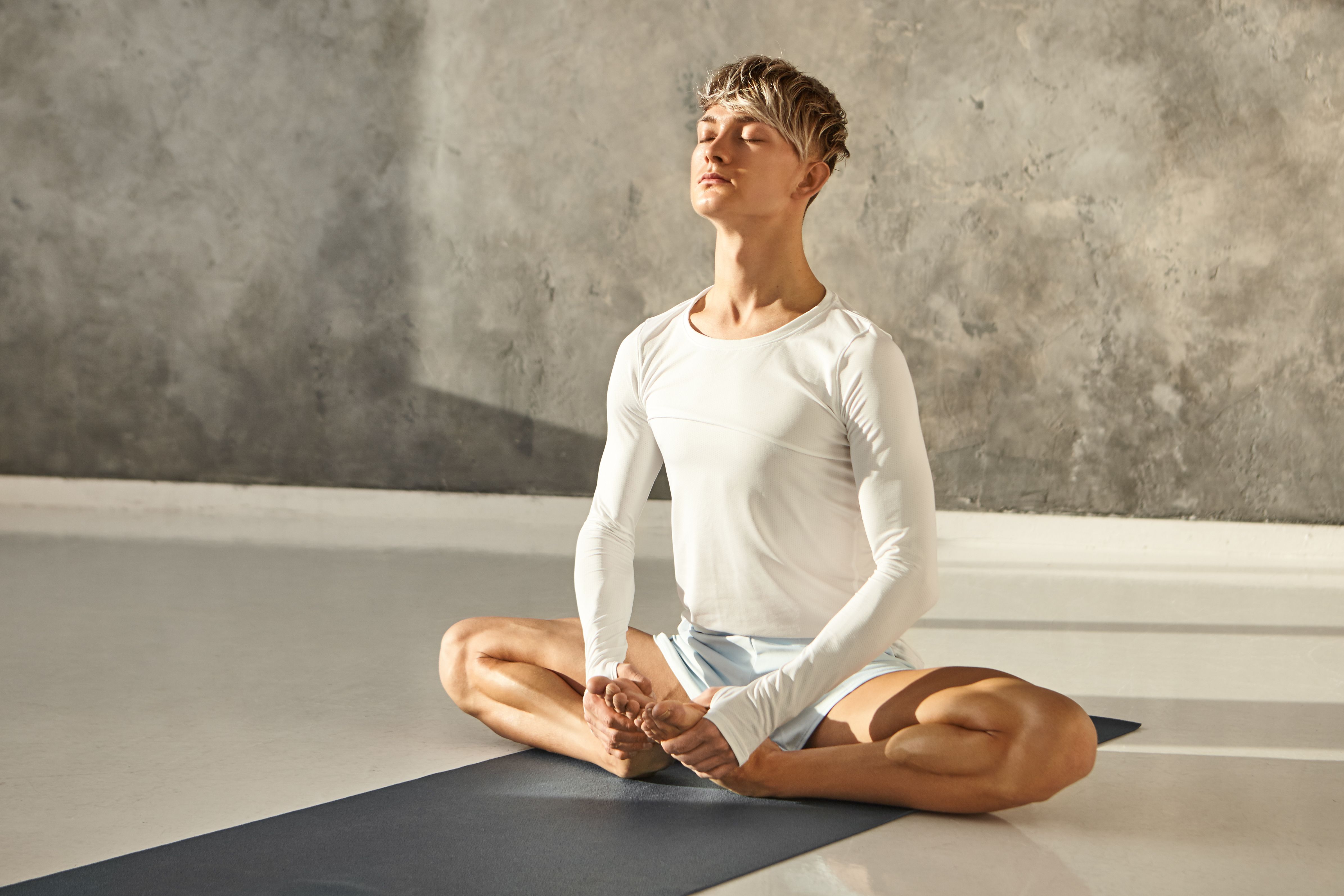
Sit with your knees bent, and make a Namaste formation with your legs. Make sure your knees are close to the mat, and that your spine is tall. Hold your feet with your hands and maintain this pose for 3 to 5 minutes.
Part 2: Step-by-Step Instructions to Perform Dandasana
The following steps to practice the Staff or Stick Pose.
Step 1- Start by sitting in the center of your yoga mat and extend your legs forward.
Step 2- Slowly inhale to engage your core muscles and align your spine perpendicular to the mat.
Step 3- As you inhale, bring your palms close to the sides of your glutes and gently press both your palms onto the yoga mat.
Step 4- Now, as you exhale, make sure your big toes are close together and pointing toward the ceiling.
Step 5- Relax your shoulders and keep your gaze aligned straight in front of you.
Step 6- Continue to breathe as you hold this pose. Focus on contracting and expanding your abdominal muscles as you breathe.
Breath Awareness:
Inhale - As you press your fingers onto the yoga mat and align your torso with a tight core.
Exhale - When you extend your legs in front of you and relax your core muscles.
Performance Duration for Beginners: Hold Dandasana for 1 minute.
Performance Duration for Advanced: Hold Dandasana for as long as you feel comfortable.
Part 3: Things to Keep in Mind
Correct alignment is essential while practicing Staff Pose, especially if you are a beginner. Here are a few cues to keep in mind for a safe and effective practice of Dandasana :
Keep your back straight: If your back is rounded or your shoulders are hunching forward, then you may not be able to feel engagement in your core muscles, and you might miss out on the therapeutic effects of this pose. So, as you inhale, your torso should be straight upright like a stick, starting from your tailbone to your crown.
Do not lock your knees: Locking your knee joints while your legs are extended in front of you is a common mistake. To avoid this, be mindful of your leg extension. Try to extend your legs by engaging your quad muscles and maintaining a minimal bend in your knees.
Part 4: Relaxing Poses After Dandasana
After sitting in the Staff Pose, your spine needs to get back into its natural curve. Below are a few counter yoga poses to relax your back muscles:
1. Paschimottanasana (Seated Forward Bend): As the name suggests, this pose involves bending your torso forward and leaning your upper body on your legs. This way you’ll be able to relax your lower back, shoulders, and scapular muscles.
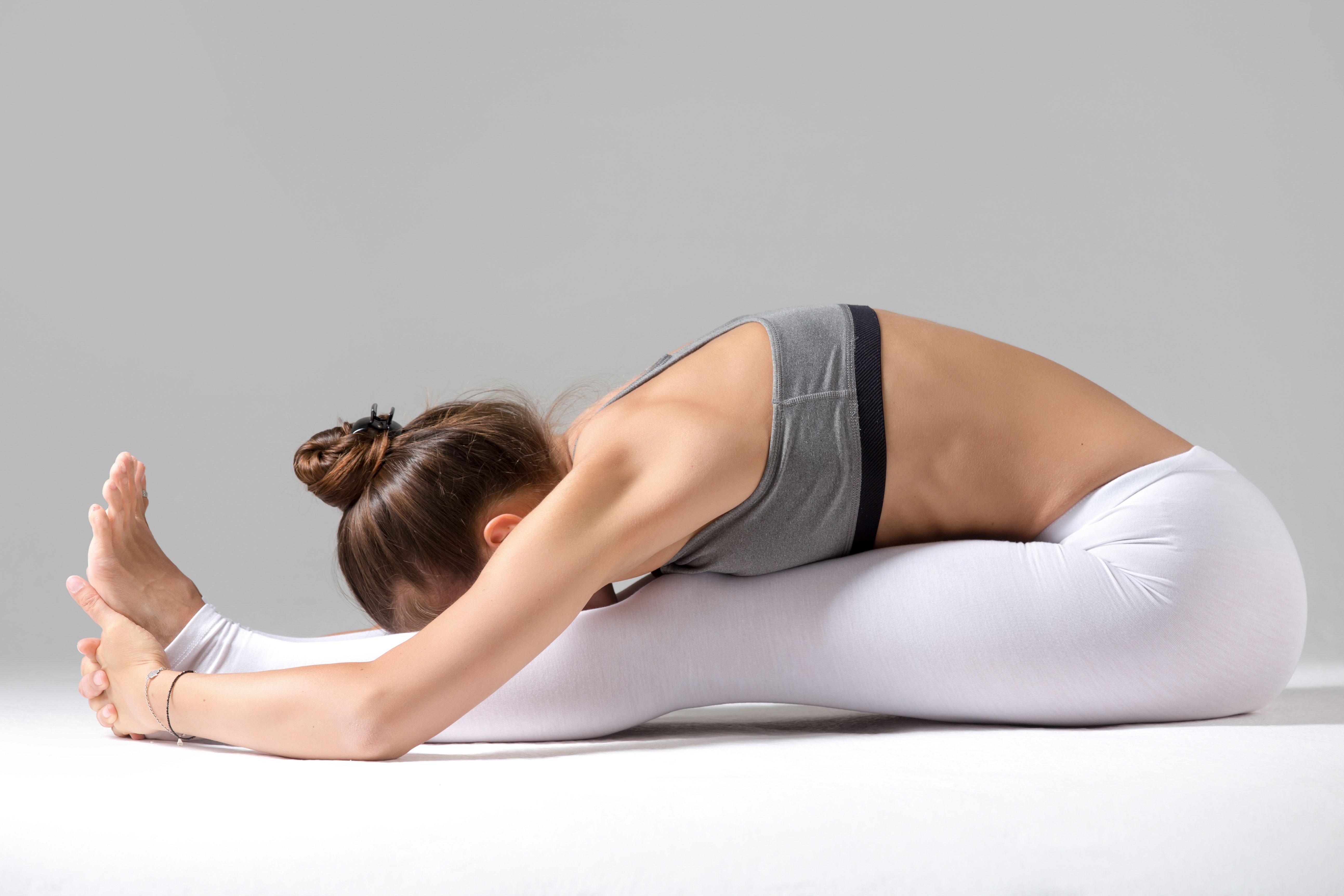
To make this easier, you can place a bolster below your knees to minimize the resistance in your hamstrings and glutes for deeper relaxation.
2. Purvottanasana (Reverse Plank Pose): If your spine and lower back were extremely tense after a long practice of Staff Pose, you can follow up with the Reverse Plank Pose.
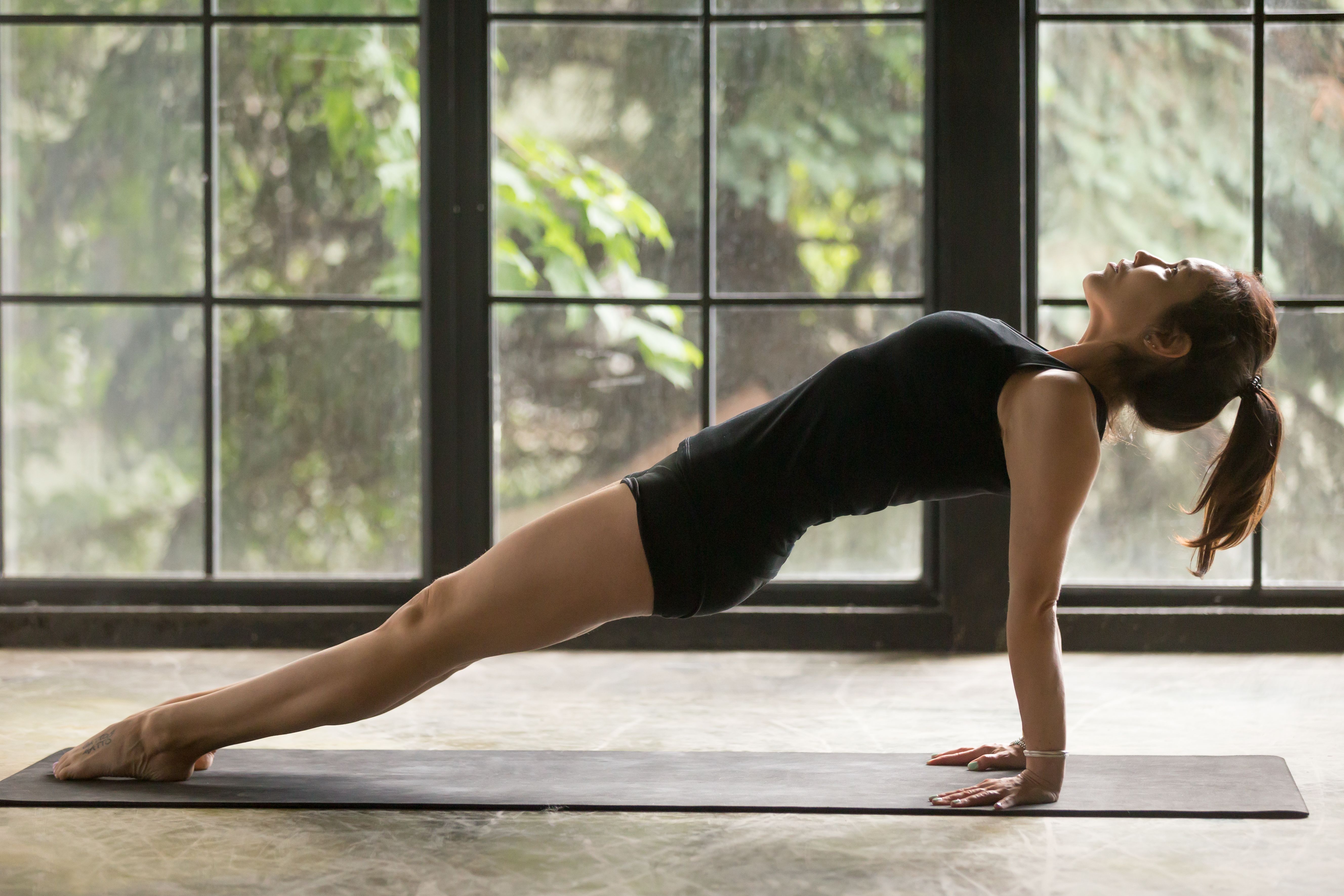
Starting in Staff pose, inhale as you engage your core even tighter, shift your upper body weight onto your palms, and lift your glutes off the mat with the strength of your arms. Stretch your tailbone toward the ceiling and maintain this hold for a few seconds.
Dandasana Variations to Consider
Here are some Staff Pose-related variations that can be performed by any level of practitioner, depending upon your physical abilities and comfort.
1. Urdhva Hasta Dandasana (Staff Pose With Raised Arms): Sit in a regular staff position and slowly raise both arms over your head. Make sure your spine, arms, and core are well aligned and engaged.
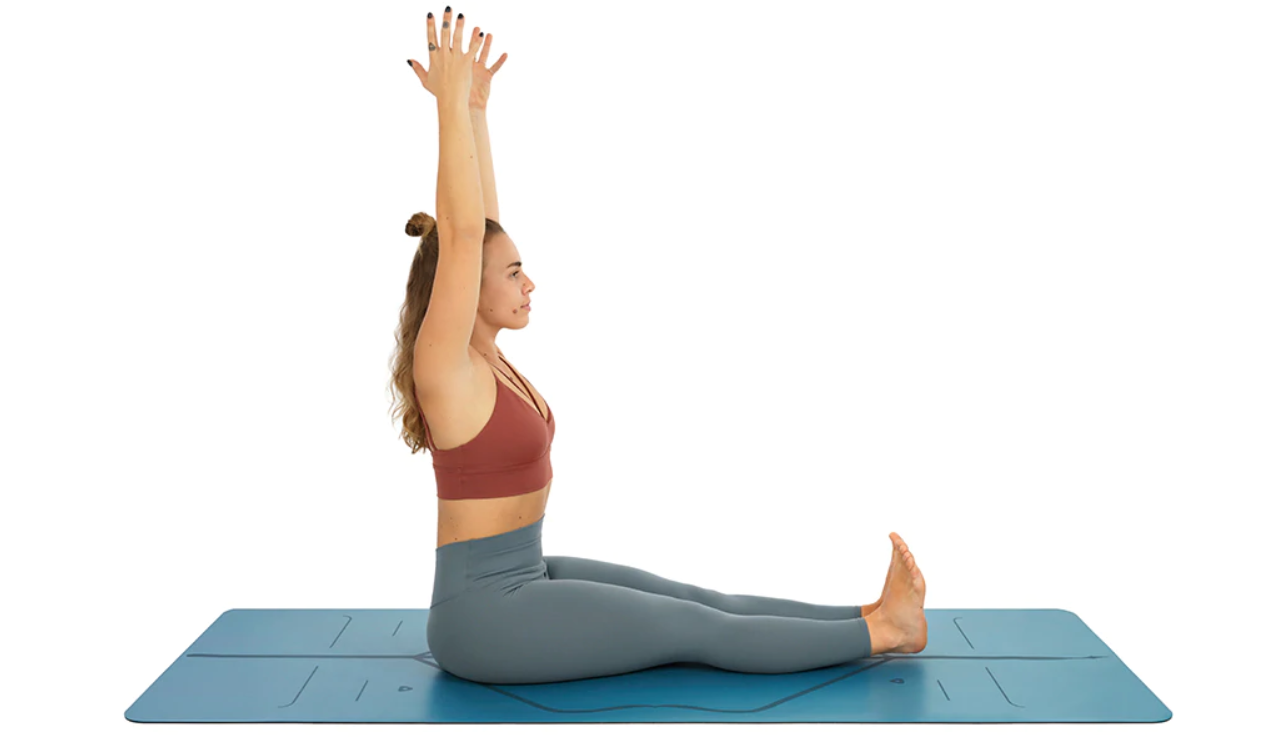
Hold this variation for 60 to 90 seconds and feel the gentle burn in your shoulders and core. The longer you hold this variation, the stronger your upper body will become.
2. Parivrtta Dandasana (Revolved Staff Pose): Parivrtta Dandasana is a seated twist pose, which helps to soothe any residual tension in your vertebral column. Start by sitting in the regular Staff Pose and slowly twist your spine to the side.

Holding this pose for 60 to 90 seconds on each side increases the flow of Prana in your lower back and spine, which allows you to improve your range of motion and flexibility over time.
3. Paschimottanasana A: If you want to go a little deeper in your Staff Pose practice, try this variation of holding onto your big toes with your fingers and resting your forehead on your knees.

You will feel an immense warming sensation in your tailbone, back, and shoulders. Hold this pose for 5 to 10 deep breaths and feel the flex in your back and leg muscles.
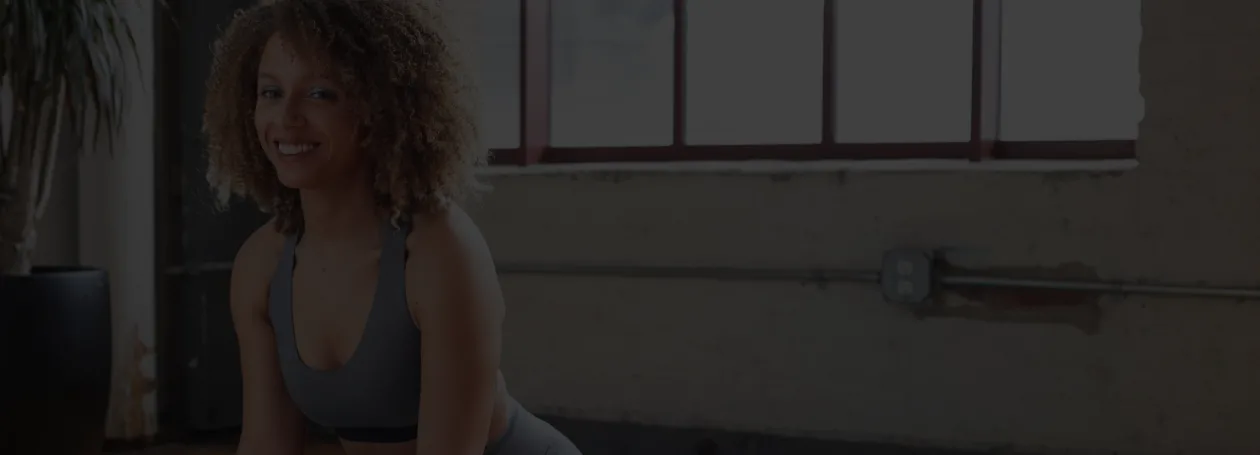
Enjoy a Free 1-on-1 Session with a Coach!
Receive personalized guidance tailored to your unique fitness goals, live with a dedicated coach—no credit card required.
Frequently Asked Questions about Dandasana
The name Dandasana is a Sanskrit word in which 'Danda' means Stick or Staff, and 'Asana' means Posture. It's a fundamental yoga asana used for improving vertebral alignment and stretching the hamstrings.
Yes, beginners can easily perform the Dandasana pose. Simply start by sitting on the yoga mat with your torso rooted on the ground, and your spine stretched vertically upright. Make sure to hold your core tight and extend your legs straight in front of you.
Practitioners with severe spinal injuries or surgeries should avoid this pose until completely recovered. Also, if you have a hernia, spondylitis, or slipped disc, then it’s wise to train with a certified yoga teacher who can help you avoid further injury and guide you with modifications.
Chaturanga Dandasana is a four-limb staff pose that is executed in the low plank position for enhanced core balance. However, the name of this posture is quite similar to Dandasana, even though both postures are drastically different from each other.
Here are the following benefits of Chaturanga Dandasana:
- Improves concentration.
- Increases core, arms, and back strength.
- Enhances mind, muscle, and breath coordination.
- Activates the Solar Plexus and Manipura Chakras.
- Prepares the body and mind for advanced arm-balance poses.



